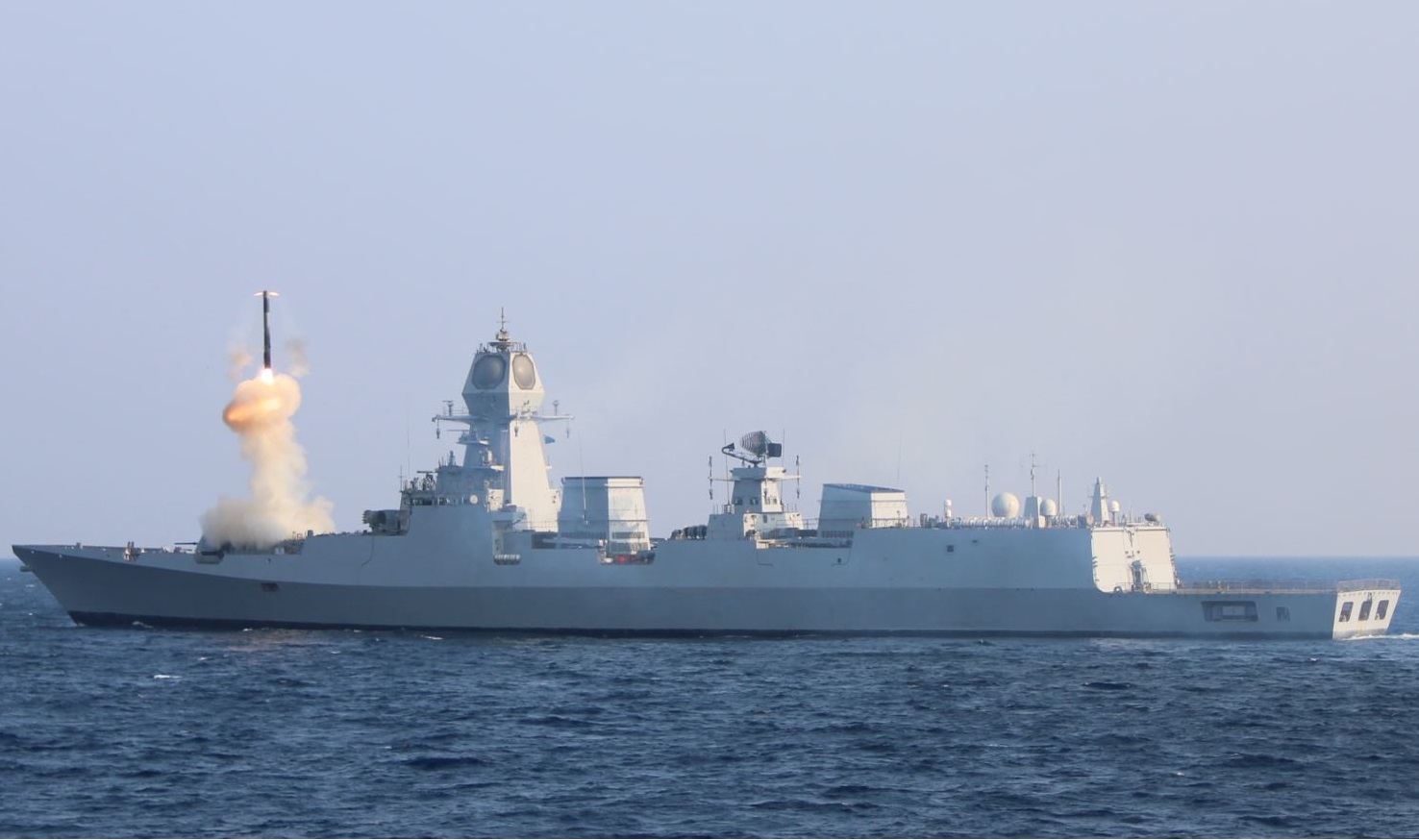Today marks a significant achievement for the Indian Navy as INS Imphal (D68), the latest addition to the Visakhapatnam-class destroyers, conducted its maiden sea trials with resounding success. The vessel, firing a BrahMos supersonic cruise missile, showcased exceptional precision and capability during this critical phase of testing. The Western Naval Command proudly shared the triumph on X (formerly Twitter), announcing the missile’s direct hit on target. The official statement hailed INS Imphal’s flawless execution, emphasizing the vessel’s remarkable performance in its inaugural BrahMos firing at sea. This milestone, featuring the first-ever Extended Range BrahMos missile test before a ship’s commissioning, underscores the Indian Navy’s steadfast dedication to Combat Readiness. It also highlights the burgeoning shipbuilding prowess of Atmanirbhar Bharat (self-reliant India) and the unwavering dependability of indigenous weaponry and platforms.
INS Imphal (D68) is the third ship of the Visakhapatnam-class stealth guided missile destroyer of the Indian Navy. She is being constructed at Mazagon Dock Limited (MDL) and has been launched on 20 April 2019. With an impressive displacement of 7,400 tons and a length of 164 meters, this guided missile destroyer embodies cutting-edge technology. Its arsenal includes surface-to-air missiles, anti-ship missiles, and torpedoes, making it an agile and powerful maritime platform. The ship started sea trials on 28 April 2023, and was delivered to the Indian Navy on 20 October 2023. She is planned to be commissioned before the end of 2023. The ship was named in recognition of the Indian soldiers who fought in Battle of Imphal during World War II. It is the first Indian Navy ship named after a city in Northeast India. Scheduled for commissioning in late 2023 or early 2024, INS Imphal continues to undergo rigorous weapons firing trials, solidifying its readiness for deployment.

The Visakhapatnam-class destroyers, also classified as the P-15 Bravo class, or simply P-15B, is a class of guided-missile destroyers currently being built for the Indian Navy (IN). The Visakhapatnam class is an upgraded derivative of its predecessor, the Kolkata class, with improved features of stealth, automation and ordnance. For its anti-surface warfare (ASuW) capabilities, the class features sixteen Brahmos anti-ship cruise missiles, capable of speeds of up to Mach 3. As part of its anti-air warfare (AAW) capabilities, the class features thirty-two Barak 8ER surface-to-air missiles. For its anti-submarine warfare (ASW) capabilities, the class features two twin torpedo launchers, designed to launch Varunastra heavyweight torpedoes. As for the class’ defensive abilities, each destroyer is equipped with two Kavach anti-missile decoy systems for neutralizing incoming aerial threats at short ranges.
The BrahMos (also designated as PJ-10) is a medium-range ramjet supersonic cruise missile that can be launched from submarines, ships, fighter aircraft or TEL. The BrahMos is notably the fastest supersonic cruise missile in the world. The missile guidance has been developed by BrahMos Aerospace. It is a joint-venture between the Indian Defence Research and Development Organisation (DRDO) and the Russian Federation’s NPO Mashinostroyeniya, who together have formed BrahMos Aerospace. The missile is based on P-800 Oniks. The name BrahMos is a portmanteau formed from the names of two rivers, the Brahmaputra of India and the Moskva of Russia. A hypersonic version of the missile, BrahMos-II, is also presently under development with a speed of Mach 7–8 to boost aerial fast strike capability. It was expected to be ready for testing by 2024.
Imphal (Yard 12706), Indian Navy’s latest indigenous guided missile destroyer, scored ‘Bulls Eye’ in her maiden #Brahmos firing at sea.#Imphal #InvincibleImphal@DefMinIndia@AjaybhattBJP4UK@SpokespersonMoD@indiannavy@IndiannavyMedia@DefPROMumbai@IN_WesternFleet pic.twitter.com/uQ42nhEAWt
— Western Naval Command (@IN_WNC) November 22, 2023











